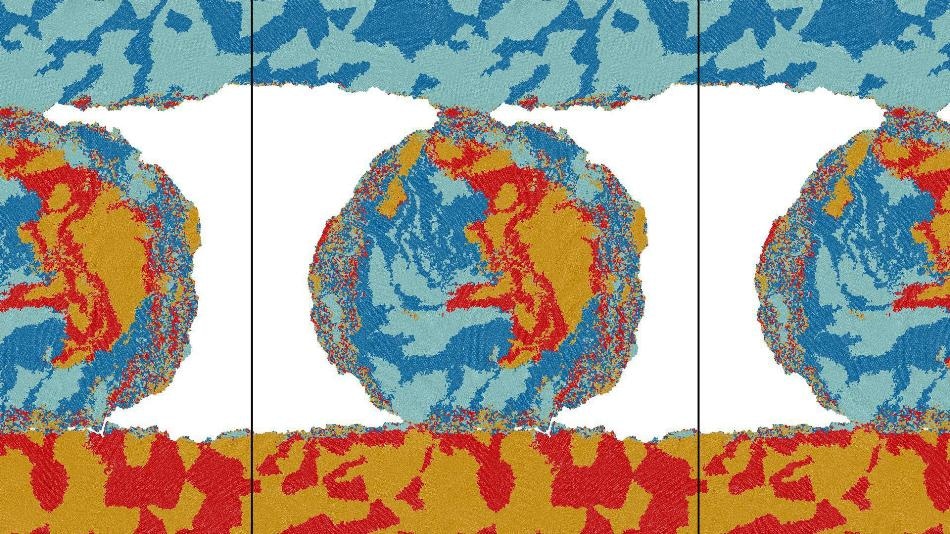Mar 11 2019
In a recent study, EPFL researchers used high-performance computer simulations to understand how surface roughness changes upon rubbing two materials together.
 Image of the computer simulation showing adhesive wear on a self-affine surface. (Image credit: LSMS/EPFL)
Image of the computer simulation showing adhesive wear on a self-affine surface. (Image credit: LSMS/EPFL)
The researchers’ findings, which provide a better understanding of wear and friction mechanisms, have implications for applications spanning from engineering to the analysis of tectonic faults.
Surface wear refers to the process of loss of material when a couple of surfaces come into contact with one another. This concept has considerable health, social, and economic consequences—just imagine the fine particles discharged by moving vehicles. Moreover, it can even be seen at all levels, right from the nanoscale up to the scale of tectonic faults, with the gouge formation. While there are a number of wear mechanisms, the adhesive type is known to be the most common one. It occurs when two surfaces—for example, two pieces of the same metal—rub against each other and stick together.
Surface roughness is one of the parameters that affect the wear mechanism. A deeper insight into how surface roughness changes at the time of wear process would enhance one’s control over this mechanism. This can possibly lead to considerable reductions in greenhouse gas emissions, energy consumption, and expenses.
Unprecedented simulation
At EPFL’s Computational Solid Mechanics Laboratory (LSMS), researchers have adopted a significant step in this direction. The team has digitally replicated how changes in surface roughness occur over time, and their outcomes correlate with experimental results. Their duration is what sets their simulations apart: using an EPFL-developed technique, the LSMS scientists successfully simulated these mechanisms over a long time period. That means, they were able to capture the whole process—starting from the first geometry to the last fractal geometry. The researchers’ findings have been reported in Nature Communications on 8th March, 2019.
This is the third adhesive wear study performed by LSMS researchers. Their initial research, reported in 2016 in Nature Communications, applied digital simulations to elucidate how fine particles were produced through the process of adhesive wear. Earlier in 2017, the researchers took their simulation experiments further, with another study—reported in Proceedings of the National Academy of Science—revealing that the size, shape, and volume of these particles can possibly be predicted.
Incomplete picture
Investigators are yet to fully comprehend the physics fundamental to wear, and engineers have to still perform ad-hoc experiments for individual situations. However, what is known is that a typical fractal morphology, known as self-affine, is usually exhibited by worn surfaces; this self-affine morphology has certain important characteristics, irrespective of the scale and the material, and its origins are still not known.
Not much research has been performed on how changes occur in surface roughness over time, and it has been largely experimental. One experimental limitation is that, due to the formation of debris, it is very difficult to track how changes occur in surface morphology at the time of the rubbing process. To resolve this problem, the team used their numerical simulations, which give a continuous stream of information.
Powerful numerical simulations
We used high-performance computer simulations to track the change in surface morphology in 2D materials. In our simulations, we observed that contact between two surfaces always generates a wear debris particle. That particle is then forced to roll between the two surfaces, wearing them down. This led us to conclude that wear debris must be present for the surfaces to develop their characteristic self-affine roughness.
Enrico Milanese, PhD Student, LSMS
In the coming days, the LSMS investigators hope to study the origins of adhesive wear by utilizing their simulation method on 3D models of materials that are significant to the industry.
EPFL researchers simulate the process of adhesive wear
Video credit: EPFL